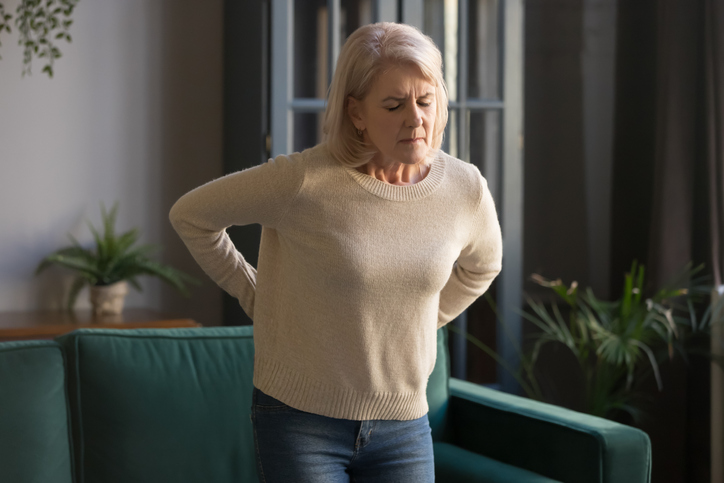
One hundred million adults suffer from chronic pain. Are you one of them?
It may be lower back pain caused by lifting a heavy box or overextending to reach a high shelf. It could be knee pain from arthritis. It could be muscle strain in your knee, hip or shoulder.
NH+C’s new pain management service can help.
The key: Treat the whole problem, not just the pain.
“A medication can address pain, but not solve the pain,” says Dean Anderson, CRNA, a nurse anesthetist and pain management expert. “We want to solve the underlying problem that’s causing your pain.”
The goal: Decrease pain to improve physical function and quality of life with non-opioid approaches.
A week or less is a safe amount of time to use opioids after an injury or with chronic pain, Anderson says. “In that time, you should be able to do treatments that help address the underlying problem that’s causing your pain: rest, stretching, physical therapy.”
If the pain persists, it’s time to consider other causes, and treatments:
Over the counter medicines. Take Ibuprofen or Tylenol to alleviate pain; NSAIDS (nonsteroidal anti-inflammatory drugs) like Naproxen or Advil also reduce swelling. You may need a different dose than what’s on the label; talk with your provider to make sure you’re taking the right dose, based on your condition and your body type. “There’s a risk of developing gastric ulcers with long-term use of these medicines,” Anderson warns. “Your provider should monitor for that. These ulcers can heal if medication is stopped in time.”
RICE. Rest, Ice, Compression, Elevation helps reduce swelling and speeds up healing. It’s good for soft-tissue injuries to muscles, tendons and ligaments.
Stretching. “We should all stretch on a regular basis to keep our muscles toned, but we usually only do it when we feel pain,” Anderson says. “Stretching takes time, and it’s boring. But it’s incredibly effective to prevent injury and pain in the first place, and to treat injuries when they happen.” Use gentle movement to stretch and strengthen affected muscles.
Massage. Gentle massage can reduce joint inflammation and muscle stiffness, improve circulation, increase flexibility, and even strengthen the body’s immune response.
Physical therapy. A therapist will tailor exercises to your condition, and teach you how to do them at home. You’ll need a referral from a provider.
“There’s a wide range of tools to help fix the underlying problem that’s causing pain,” Anderson says. A pain management specialist can help determine the best options based on your condition. You may benefit from a combination of treatments.
Expect relief in about one month: “It’s reasonable to spend a month on a range of treatments tailored to you,” Anderson says. “If you’re not feeling relief within a month, we can use CT scans and MRIs to look for other factors, like a fracture or arthritis” and consider more intensive treatments like acupuncture, dry needling, injections or ablation.
Already on opioids? How to taper off
If you have been taking opioids and need to stop, Anderson can help.
The key: Find the root cause of the pain. Then, use non-narcotic alternatives to treat the pain while also using therapies and interventions to treat the root cause.
Imaging can help identify treatable injuries. CT scans show soft-tissue problems that can affect the spine or joints; MRIs show structural problems. Once the care team knows the root cause, they work with the patient to tailor a treatment plan.
How long it takes to taper off opioids can depend on the dosage, and how long the person has been taking it. Tapering must be done slowly and be carefully monitored to avoid withdrawal symptoms.
